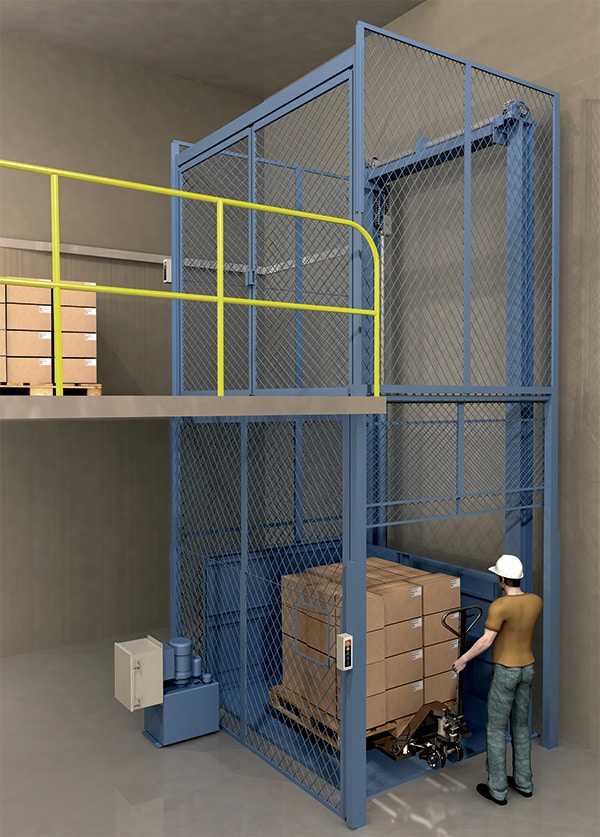Hydraulic Elevators—A Great Feat of Engineering
One of the greatest inventions of the 19th century has to be the elevator. Today, you would be hard-pressed to find a multi-level building without one. And for a good reason! The elevator has made it possible to build up and not out.
Elevators were even in use during the Pre-Industrial Era. The elevators we use today are far from their earlier ramshackle and unsafe counterparts. However, basic elevator principles remain relatively unchanged.
There are three primary elevator types: hydraulic lifts, electric traction lifts, and machine room-less lifts. While each of these types of lifts has its own pros and cons, the hydraulic elevator is the most commonly used in modern society.
This post will explore the hydraulic lift advantages and disadvantages.
The Pros and Cons of Hydraulic Lifts
The hydraulic system is based on Pascal’s principle of transmission of fluid pressure. Essentially, the compression of fluids is used to generate control and power.
Here’s how it works: The lifting mechanism of a hydraulic lift utilizes an electrically powered pump, which pushes pressurized fluid into a jack lifting system. Pistons within a cylinder at the base of the lift then power the elevator car up and down.
The Advantages of Hydraulic Lifts
 As we mentioned, the hydraulic elevator is one of the most commonly used lifts. Hydraulic lifts:
As we mentioned, the hydraulic elevator is one of the most commonly used lifts. Hydraulic lifts:
- Are less expensive to install than other elevator types.
- Occupy less space in a building, requiring almost 10% less area for the lift shaft than other elevating means.
- Do not require a separate machine room. Similarly, overhead structural requirements are not required. Load-bearing walls bear the brunt of the elevator load.
- Can accommodate the use of a remote machine room.
Despite the popularity and advantages of hydraulic systems, there are a few drawbacks.
What Are the Disadvantages of Hydraulic Lifts?
There are a few hydraulic lift disadvantages, including:
- The relatively slow lifting speed. A hydraulic lift cannot move faster than 150 feet per minute.
- Oil in the piston system can overheat fairly quickly, so efficient temperature control is important.
- The hydraulic oil can emit an unpleasant odor when it becomes too warm from overuse.
- Hydraulic oil can leak out of the pumping system and into the ground at the base of the elevator. This can lead to soil contamination or groundwater pollution.
- Hydraulic lifts tend to be a little noisier than other elevator systems.
- The lift movement is generally not as smooth as with other lift systems.
Despite these minor drawbacks, hydraulic elevators are still used in many commercial buildings today.
Differences Between Hydraulic and Mechanical Lifts
There are several differences between a mechanical and hydraulic lift:
- Mechanical lifts are designed for unlimited use. Hydraulic lifts have limited cycles per hour and per day.
- Although hydraulic lifts typically are less expensive than mechanical lifts, they require more ongoing maintenance than a mechanical VRC.
- Mechanical lifts have an unlimited vertical rise to accommodate lifting to multiple floor levels. Hydraulic lifts have a limited vertical rise and are often limited to 2-level applications.
- Mechanical lifts can lift an almost unlimited payload capacity whereas hydraulic lift payload capacity is generally 6,000 lbs.
Hydraulic Lift Safety Features
PFlow Hydraulic lifts come with a wide range of standard and optional safety features such as:
- Carriage enclosure and safety gate with an interlock mechanism
- Compliance with ASME B20.1 Safety Standards
- Velocity fuses that prevent uncontrolled descent in the unlikely event of a hose rupture
- Check valves hold the carriage in place if power to the lift is lost
- Optional explosion-proof components
Hydraulic Lift Maintenance
The maintenance you’ll need to perform on your hydraulic lift depends upon the model and configuration. Basic maintenance includes monthly visual safety inspections and replacing the hydraulic fluid on an as-needed basis.
The oil filter and hydraulic oil only need changing once per year. Fittings and hoses require replacement every five years. Read more about hydraulic lift preventative maintenance in our knowledge base.
Vertical Material Lifting Solutions for Your Business
No matter how simple or complex your material lifting needs, PFlow Industries can engineer a solution for your business. With years of industry success to our name, we specialize in design and manufacture of hydraulic lifts, mechanical vertical lifts, and fully automated material handling solutions for a wide variety of industries.
Or, check out how PFlow hydraulic lifts brought new efficiencies to a manufacturing plant.
